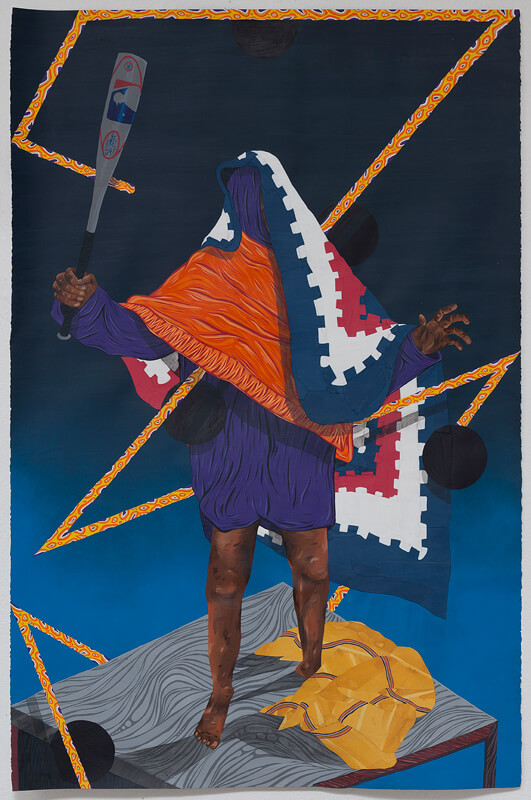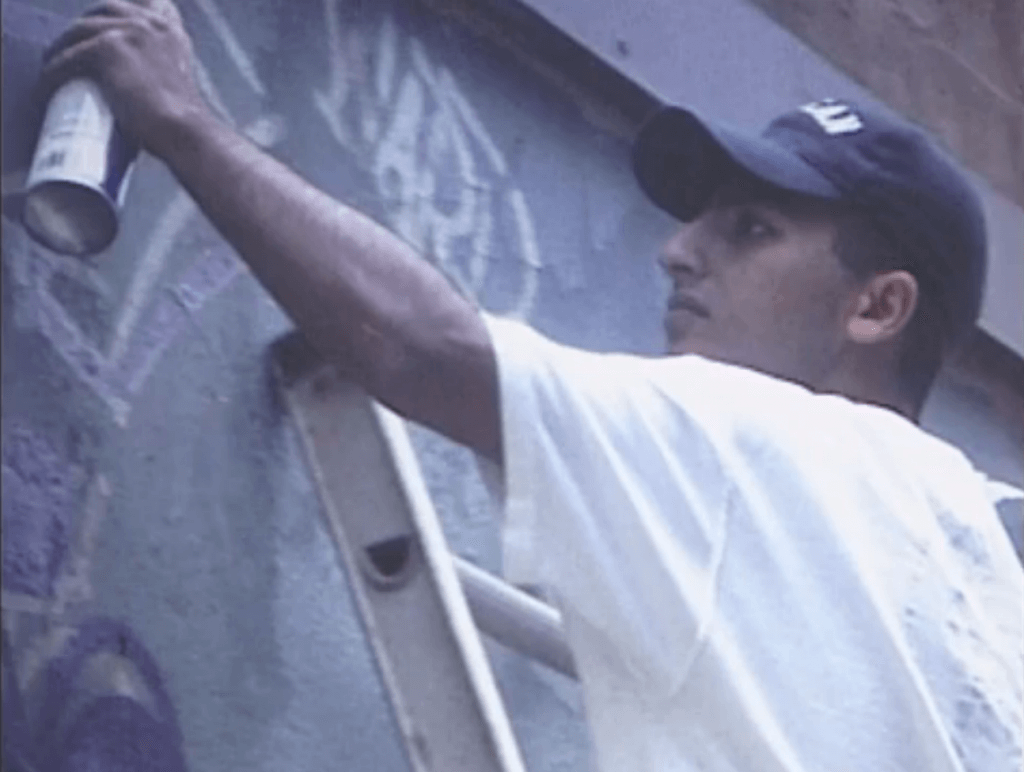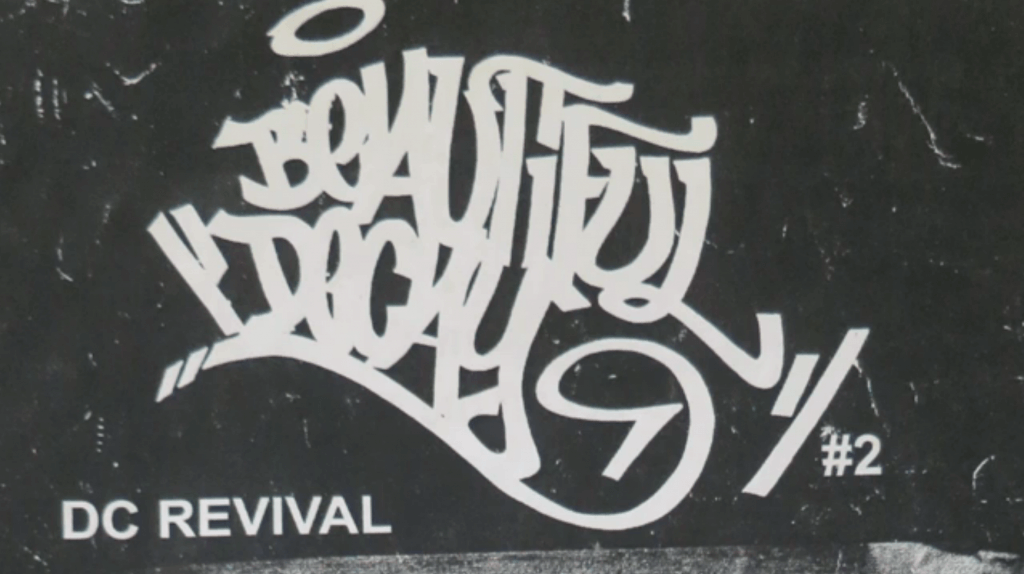Amir H. Fallah: You Can’t Fake This

Amir H. Fallah, an artist and founder of Beautiful/Decay Magazine, found acceptance and inspiration in the photocopied ‘zines, punk rock music, graffiti, and skateboarding of his youth. Today, he captures a new way of framing modern painted portraiture showing his work internationally as a fine artist. FRONTRUNNER caught up with Amir in his studio in Los Angeles last year and produced a short documentary film You Can’t Fake This, chronicling Fallah’s early adventures.
Tell me about your current work.
What I do is, first, I’ll go into a friend’s home and ask them to pull objects from around their home that have some meaning to them. They can be something that a family member gave you, something that was passed down generation to generation, or something that you bought as a teenager that for whatever reason you can’t let go of. These mundane every day things are embedded with history, or emotion that you just can’t get rid of.
You’re working on a series of painted portraits, correct?
Yes. They are all veiled portraits, where you can’t see the person’s face or what they look like. The skin colors are changed drastically so you can’t tell if they’re white or black and they are surrounded by their every day possessions that they gather up in their homes, so, you’re left with the idea of trying to figure out who this person is by the mundane, every day things, that they surround themselves with. Almost, like, if you go to someone’s house and they’re not home, and you’ve never met them, and you start looking around. There might be a magazine on their coffee table, a certain clothing item laying around, and you start painting this picture in your mind of who they are without actually seeing them. And sometimes you’re right and sometimes you’re wrong. I am trying to paint a picture without showing any of the superficial signifiers of portraiture.
Tell me more about your recent series of commissions.
With this commission series the collector pays for the painting in full, and then they don’t see the artwork again until the opening of the show. Throughout history when you do a commissioned portrait, the artist turns into just another tool, They simply create the image that the collector wants. They want to show power, they want to show strength, beauty, you know, whatever their agenda is. An artist is just sitting there and the collector is dictating what their wants are. The artist is almost like a photoshop filter, you know? They’re making it happen. I could never make work like that. I could never do a straightforward portrait where someone is like, oh, make that color a little brighter, take a couple pounds off [of] me. I wanted to create this scenario where there was a role reversal and the artist was in power and the collector was at the mercy of the artist. So, I could make them look bad, I could make it their least favorite color, and there’s a lot of editing in my work anyways, so they have no idea what the finished product is going to be. I’ve done two of these so far, and I’ve revealed them to collectors and I am doing a show, where nothing will be for sale at the actual opening. Everything is pre-sold and there will be about 7-8 commissioned portraits.

Protector of the Oath
Acrylic on canvas
Courtesy of the artist
Let’s go back to the founding of Beautiful/Decay Magazine…
I had this whole do-it-yourself spirit. I wanted to do something that kind of crossed over – something that would be a mix between a Juxtapoz and an Art Forum. Something that fell in the middle, you know? I wanted to take the accessibility of a magazine like Juxtapoz but with more of an academic understanding of art. Juxtapoz is a cool magazine but it caters a more general demographic. Its not a very academic publication or very informed about contemporary art history. ArtForum is the opposite extreme, it’s like a theory based art bible. I wanted to make something that was in the middle because I was in the middle. So, I just wanted to make something that I would want to read. There were no blogs, there was barely the internet, I wanted to make a publication that was accessible to a twenty one year old artist that was in college. Which was me, you know? I was interested in graffiti, but I was also going to art school and learning about art history. I had my feet in these two worlds and I wanted to combine them and so I started Beautiful/Decay.

What are some good stories from the early days?
The first, two or three issues were funded by throwing these warehouse parties, very D-I-Y, word of mouth. The parties just keep getting bigger and bigger. People were traveling from other states. I had people traveling from Tennessee, Baltimore, from Boston, for these parties. There was nothing crazy about these parties, we just had this network of friends and they would just call each other and they would get excited and would come down to Baltimore. We held the parties at my friends lofts. I wasn’t renting an actual space. I was like, I’ll give you a hundred dollars and all the beer you can drink, and they said, “Great!” They got really crazy and debaucherous. I don’t even drink, so I was throwing these wild parties where I am the only one sober. No one could get in for free, Everyone had to pay unless they helped. Again, the goal wasn’t to make money. It was only to raise enough money to put out the next issue.

Tell me about your approach and how you choose your medium.
So, it’s started with collage, but then I started using colored pencils and inks, and drawing into the paintings, painting on the paintings, now I am using oil paint, with the paintings and collage. I’ve taken all the materials that I like and put them together to create a cohesive visual aesthetic. It’s very liberating because before I would do a year of oil painting and then a year of collage, and then I would do a year of just doing colored pencil drawings. My work, stylistically would go through drastic shifts. Now the aesthetic is a lot more consistent, and my visual voice is stronger because its more unified. By bringing all these different elements together it was kind of a problem at first, but, actually, I think, it helps the work.











Responses